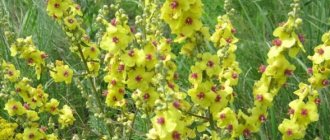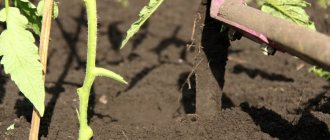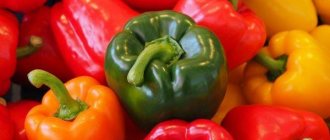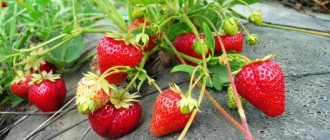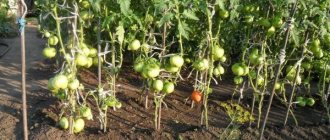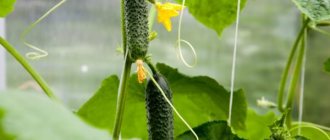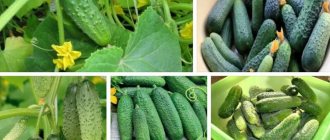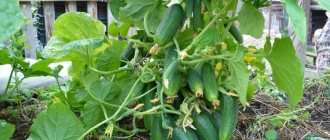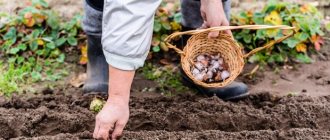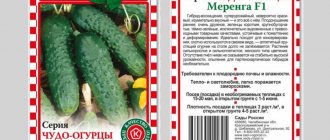What are parthenocarpic cucumbers?
Parthenocarpic cucumbers are a type of cucumber crop that does not require pollination for the formation of ovaries. Most often, their vines have very few male flowers or none at all, but female flowers - in generous quantities. There are no seeds inside this type of fruit, so it will not be possible to collect them, and you will have to buy the seeds again the next season.
History of origin
In the 50s of the 20th century, breeders began to work on a hybrid of cucumbers so that its cultivation in a greenhouse would not cause difficulties in terms of pollination. The first results were emerald fruits about 40 cm long, which were not at all suitable for pickling and preservation.
Long-term work on parthenocarpy and various varieties during crossing led to the emergence of salad hybrids, eaten fresh, pickling varieties that do not lose their taste and aesthetic qualities during preservation.
In addition, thanks to the efforts of breeders, parthenocarpic cucumbers grow well and bear fruit not only in a greenhouse, but also in open ground, and on apartment balconies or window sills in houses.
F1 April
This variety is excellent for growing green vegetables in spring greenhouses. The plant is capable of producing the first harvest literally 45-50 days from the moment the seeds are planted, and the harvest given by this variety is quite stable and long-lasting. Moreover, this variety exhibits serious resistance to various diseases, which is its great advantage.
Summer residents note that F1 April is a frost-resistant variety whose fruits have excellent taste. They are best used for preparing fresh salads. The average fruit weight is from 150 to 300 g.
Differences between parthenocarpic and self-pollinating cucumbers
Parthenocarpic and self-pollinating cucumbers differ radically in the way the ovaries appear. The first type of plants, as already mentioned, does not require pollination at all to produce fruit, while the second type of cucumbers pollinate independently, that is, for the appearance of ovaries on them, pollination is fundamentally important.
In addition, parthenocarpic cucumbers in most cases do not have male flowers, but their presence is required on self-pollinating hybrids.
The similarity of both types of crops is that they do not require the presence of pollinating insects or other third parties to allow the transfer of pollen between flowers of both sexes.
Barvina
This variety is a typical parthenocarpic variety. The bushes have medium height and a developed root system. The variety is early ripening, harvesting can begin after 38-40 days. 3 flowers are formed on one node.
From this article you can learn everything about cucumbers in a polycarbonate greenhouse.
The color of the fruit is dark green, there are tubercles on the surface. Their shape is presented in the form of a cylinder. The length of the vegetable reaches 10-12 cm. The taste is excellent, there is no bitterness. From 1 m2 it is possible to collect 20-25 kg of cucumbers. The presented product retains its irreplaceable qualities when preserved and salted.
Advantages and disadvantages
If we compare ordinary varieties of cucumbers with parthenocarpic hybrids, then the latter, in addition to the parthenocarpy property, have some advantages:
- the formation of more fruits on the vines;
- cucumbers of the same shape, without any hollowness;
- cucumbers, being on the plant for a long time, do not turn yellow;
- There is no bitterness in the taste characteristics of cucumbers;
- long fruiting period;
- immunity to diseases and pests due to vaccination;
- increased shelf life and the possibility of long-term storage.
There are not many disadvantages to such cucumbers:
- the variety does not like sudden temperature changes;
- When grown in open ground and pollinated by insects, fruits with differences and deformations in shape are possible.
When planting such cucumbers for winter harvesting, carefully consider the choice of seeds, since some varieties and hybrids are intended only for fresh fruit consumption.
Dependence of parthenocarpy on growing conditions
The relationship between parthenocarpy and cucumber growing conditions is manifested in the following:
- Hybrids are vaccinated against diseases, so they do not require special measures against diseases and pest attacks.
- A large difference between day and night air temperatures leads to a decrease in the number of ovaries and inhibition of plant development.
- The formation of a bush, its pinching and the optimal arrangement of vines directly affects the amount of harvest.
- Hybrids bear fruit well in closed soils and in the open air.
The best parthenocarpic cucumber hybrids
Each gardener has his own favorite varieties and hybrids of parthenocarpic cucumbers. Among all their diversity there are no good and bad. Each of them differs in qualitative and quantitative yield indicators, the time interval in agricultural work, as well as the possibility of growing in open or closed ground.
Let's look at some of the common varieties and hybrids of this type of cucumber.
| Name | Growing method | Ripening time, days | Weight, g | Length, cm | Productivity, kg/sq. m | Canning | Peculiarities |
| Vyaznikovsky 37 | open ground | 35-40 | 130-150 | 10-14 | 10-12 | + |
|
| Snack bar | open ground | 45-48 | up to 120 | 9-10 | 5,2 | + | resistant to olive blotch |
| Mother-in-law F1 | universal | 43-45 | 120 | 8-10 | 4,5-5 | + | sweetish taste |
| Claudia F1 | universal | 50-55 | 80-100 | 9-12 | 10-15 | + | seed primordia become coarser when overripe |
| Masha F1 | universal | 38-43 | up to 110 | 9-10 | 10-11 | + |
|
| Bully | universal | 40-42 | 80-100 | 8-10 | 10-11 | + | fruiting until the first frost |
| Heap is small F1 | closed ground | 47-50 | up to 75 | up to 12 | 12-15 | — |
|
| Kanaglia F1 | universal | 40-42 | 50-70 | 6-8 | 20 | + | resistant to fungal diseases |
| Kuzya F1 | universal | 40-42 | 15-30 | 3-6 | up to 15 | + | resistant to cucumber mosaic and powdery mildew |
| Meva | universal | 45-47 | 200 | 10-18 | 20-27 | — | resistant to cladosporiosis and powdery mildew |
| Fawn F1 | closed ground | 40-43 | up to 100 | 8-10 | 12-15 | + | disease-resistant |
| Brook | universal | 40-43 | up to 50 | 10-12 | 10-13 | + |
|
| Uglich F1 | universal | 45-50 | 100-120 | 10-13 | 5-7 | + |
|
| Zircon F1 | universal | 39-41 | up to 80 | 10-14 | 23-25 | + | resistant to mosaic virus |
| Advance | universal | 49-50 | up to 120 | 10-14 | 3 | + | disease-resistant |
| Herman F1 | universal | 39-41 | 70-100 | 10 | 20-25 | + | resistant to most diseases |
| Adam F1 | universal | 45-52 | 90-95 | 11-13 | 8-10 | + |
|
Varieties of parthenocarpic cucumbers for open ground
Since parthenocarpics do not require pollination, they are usually grown in a greenhouse, less often in greenhouses. But in recent years, hybrids have been developed that grow well on unprotected ridges. Typically, parthenocarpic cucumbers are of the female flowering type. But if other varieties and hybrids with male flowers grow nearby, pollination can occur. Then the resulting fruits have a non-standard shape, constrictions or thickenings, as in the photos presented. Typically, such changes occur in varieties with long, smooth fruits. Short-fruited varieties do not deteriorate their properties.
For planting in open ground, you need to choose varieties adapted to local climate conditions. They must withstand heat or low temperatures well, and be drought or moisture resistant. Other indicators are also taken into account.
Cucumber Ruffnut
The first greens of the hybrid can be picked 40 days after germination of the seedlings. Side shoots form up to four internodes. Tufted ovaries with five fruits are formed on the bushes. Zelentsy have a regular cylindrical shape. Their skin is covered with light stripes. The fruiting period is very long. With the right agricultural technology, you can pick greens until the cold weather. According to the description of the variety and reviews from vegetable growers, the fruits are suitable for winter pickles and marinades. In the south, seeds are sown directly into the ground; in more northern regions, seedling cultivation is preferable.
Cucumber Stream
A hybrid variety bred for planting in cold climates. Medium-sized bushes produce fruits at the nodes. Zelentsy are oblong in shape, their weight does not exceed 50 g. The peel of a dark green shade is abundantly covered with tubercles. This variety is not susceptible to rot and successfully resists viral mosaics and downy and true powdery mildew. Collecting fruits from 1 sq. m. is up to 35 kg. According to your taste, greens are suitable for winter pickles.
Cucumber Fawn F1
The hybrid variety, bred by Russian breeders, grows actively in unprotected beds and in film cover. The length of the central vine is up to 3.5 m. Its tufted ovaries are laid in the axils of the leaves. From the moment of germination of seedlings to the ripening of the first greens, 40 days pass. The fruits have a striped, dark green skin with a lumpy surface. The number of fruits per plant is up to 20 kg.
Cucumber Uglich F1
The parthenocarpic hybrid ripens early and is recommended for planting in film shelters and open beds. Seeds can be sown directly into the soil or seedlings can be grown first. The formation of ovaries occurs in the leaf axils. Fruiting begins 45 days after seedling germination. Fruits weighing up to 100 g have a dark green skin with a tuberous surface. They keep well fresh and withstand long-term transportation. Productivity is up to 15 kg.
How to grow parthenocarpic cucumbers?
Parthenocarpic cucumbers do not differ in the difficulty of growing from ordinary ones, since they practically do not require special conditions or agricultural technology. For each cultivation option, its own timing is considered optimal, depending on the possibility of creating a microclimate.
In the open ground
Cucumbers are sown in open ground with seeds, or ready-made seedlings are planted. In both cases, it is important that the soil is prepared and warmed by sunlight. Otherwise, the vegetable crop will wither and eventually die. The favorable air temperature for cucumbers is 25-28 degrees Celsius.
To obtain seedlings, 35-40 days before the intended planting in open ground, the seeds are sown in individual peat pots or reusable containers. To do this, use universal soil purchased in the store, or a planting mixture of your own production. The second option requires soil disinfection. More is written about planting cucumber seedlings here.
Before sowing, seeds are disinfected by soaking for 15-20 minutes in a slightly pink solution of manganese. To speed up the emergence of seedlings, it is allowed to soak the planting material in a growth activator.
Instructions:
- Deepen 2 seeds into the soil to a depth of 3 cm and sprinkle with earthen mixture.
- Spray water onto the surface to moisten the soil.
- Cover the pots with glass or transparent film and place them in a warm, bright place. As soon as the sprouts sprout, remove the covering material from the pot.
- Make sure that the plant has enough sunlight; additional lighting may be required during this period. When growing on a windowsill, rotate containers with seedlings daily so that they grow proportionally and do not stretch or become deformed.
- As the cucumbers grow, move them away from each other to avoid touching and shading.
- Carry out the necessary agrotechnical procedures. When the plants reach a length of 30-40 cm and 4 true leaves appear, they need to be transplanted into open ground.
It is possible to plant seedlings in open ground using several methods:
- Single line vertical. The distance between plants is at least 15-20 cm, row spacing is 50-70 cm.
- Belt vertical. The distance between plants in a row is 15-20 cm, between ribbons - 40-50 cm, row spacing - 70-90 cm.
- Chess horizontal. A distance of 60-80 cm is maintained between plants, providing row spacing. Formed cucumber vines should not be shifted; this should be done at the growth stage, removing them from the row spacing.
- Bush. 2-3 plants are planted in one hole, leaving for them an approximate square of free space measuring 1.5x1.5 m.
The same schemes are followed when sowing seeds in the ground at the end of May.
In room conditions
Having decided to grow parthenocarpic cucumbers indoors, you need to choose a place for them and prepare it. This can be a balcony, loggia, window sill, if they face any side other than the north. The space should be cleaned, cracks and other sources of cold air penetration should be eliminated, the glass should be washed, and it is possible to install phytolamps or fluorescent lamps.
Seeds should be selected specifically for growing indoors to eliminate the need for pollination by insects. If additional lighting is available, seeds can be planted at any time.
Containers should be chosen with a volume of at least 8 liters, with drainage holes in the bottom.
Instructions:
- Pour a drainage layer of gravel or expanded clay into the container with a layer of at least 3 cm, and fill the top with prepared disinfected soil. Do not fill the container to the brim, leave a free strip of a couple of cm.
- Rinse the tubs with hot water. A day later, sow 3-5 seeds, deepening them 3-4 cm into the soil. Further activities do not differ from the usual cultivation of seedlings at home.
- Caring for cucumbers is no different from what is provided to the crop in open ground or shelter. Make sure that the sun's rays do not burn the cucumber leaves, shading them as necessary. Spray the foliage daily with water from a spray bottle. Cucumbers respond especially well to such sprinkling.
You can sow the seeds in small peat pots, and after forming 4 leaves, transplant them into large buckets.
Indoors
Most often, cucumbers are transferred into closed ground in the form of seedlings, which are grown in advance in reusable or peat containers indoors. Before planting, the plants must be hardened off; to do this, the seedlings are taken out to a cooler room overnight, gradually lowering the temperature to 18 degrees.
The planting pattern depends on the dimensions of the greenhouse. But you should not thicken the plantings so that the cucumbers do not interfere with each other. The best option is the vertical growing method using supports and trellises.
They dig holes in the garden bed, moisten them abundantly, and place the seedlings in them together in an earthen lump or in a peat glass. Sprinkle with soil so that the edge of the container remains outside. This will prevent blackening of the root stalk and the development of rot. The soil is slightly compacted.
Read more about growing cucumbers in a greenhouse in our other article.
Features of care
Parthenocarpic cucumbers do not require pollination. In addition, some hybrids do not require the formation of a bush, which makes caring for them much easier.
Caring for the first shoots
After germination, make sure that the soil is moist and loosen it in time to prevent the formation of a hard crust on top of the soil, which prevents the penetration of oxygen to the roots and the absorption of nutrients and nutrition.
If there are temperature changes, cover young plants with film at night. If the soil has a sufficient amount of micro and macroelements, then problems with seedlings and the formation of adult leaves should not arise.
Watering and weeding
Moistening the soil is one of the main procedures for cucumbers. Without enough moisture in the soil they will die. For irrigation, use only water at room temperature, preferably from natural sources, or settle it if it is from a tap.
The procedure for moistening the soil should be carried out before the crop blooms - every other day, during the flowering period - reduce to 2-3 times a week, and when the ovaries form, return to 3-4 times a day of watering. If the weather is dry, it may need to be done daily.
Removing weeds preserves nutrients in the soil, eliminates shading of cucumbers and the transfer of infections and pests from weeds. Weeding additionally loosens the soil, enriches it with oxygen, and retains moisture in the root zone of the vegetable crop.
Top dressing
To replenish the supply of useful components and compounds in the soil, mineral and organic fertilizers are used:
- When planting, fertilizer is applied to the planting holes using compost and manure.
- After adaptation of young plants in a greenhouse or open ground, application of nitrogen fertilizers (10-15 g per 1 liter of water) to activate growth and vegetation.
- Every 3 weeks, starting from flowering, they are fed with complex mineral nutrition or organic-based fertilizers, as well as folk methods. For example, dissolve ammonium nitrate or urea in a bucket of water - 15-20 g; superphosphate - 15 g; potassium sulfate - 15 g. You can prepare a solution of chicken droppings, manure or compost at the rate of 250-300 g per bucket of water.
It is important to consider the total amount of fertilizer applied to avoid oversaturation of the soil with it. This negatively affects cucumbers, as does nutritional deficiency.
It is advisable to fertilize the beds in the evening, using the root or foliar method. When foliar feeding, make the mineral fertilizer solution less concentrated. Before carrying out work on additional soil nutrition, be sure to water the plants.
Read more information about feeding cucumbers when grown in open ground - here.
Bush formation
Pinching is necessary to reduce the plant's plant mass, and therefore the consumption of nutrition, which goes not into the formation of the crop, but into shoots and foliage. Carry out pinching work only when the cucumbers are tied up. When growing cucumber crops in a horizontal position, pinching is done in such a way as to minimally disturb the main vine.
Pinch the tops of the vines so that the greens have time to ripen and the plant does not lose strength by lengthening the vines. As a rule, the parthenocarpic type of cucumbers produces fruits only on the main vine, so it is important to correctly form the bush and remove the lateral shoots:
- To blind the bush, remove all flowers and shoots in the axils of the first five leaves.
- Then leave 6 shoots, but no more than 25 cm long.
- The next shoots are left longer - up to 40 cm.
- After that - about half a meter.
The final appearance of the bush looks like an inverted pyramid.
Agricultural technology of hybrids
Basic agricultural techniques are standard for any growing method:
- watering;
- loosening;
- weeding;
- fertilization;
- plant formation.
The only thing missing from the list is weeding when growing parthenocarpic cucumbers at home.
Irrigation
After transplantation, the plants are not watered for approximately 4-7 days to allow adaptation to the new conditions. Next, before budding begins, irrigate moderately, preventing the soil from drying out.
During the fruiting period, watering is increased to 8-10 liters of water for each bush. They focus on the weather; in hot weather, water frequently, preventing the soil from drying out. Monitor air humidity (in shelters) and soil. Cucumbers do not like excess moisture and begin to get sick. Hybrids are resistant to rot, but if watering standards are not followed, they can get sick.
On a note!
Excellent results are shown by hybrid forms when irrigated with drip systems.
Mulch is used to retain moisture. Use:
- straw;
- hay;
- humus;
- peat.
The roots of the plant are located close to the surface of the soil, so if not carefully loosened there is a risk of damage. Mulch will protect against drought, waterlogging, and keep away weeds. Watering - in the morning, with settled warm (+20ºC) water. The maximum humidity in the shelter is 70%.
Fertilizing
The first time the cucumbers are fed is 19-21 days after planting. Suitable organics: diluted mullein (1:10), poultry droppings (1:20), mineral additives (ammonium nitrate, superphosphate). Fertilizers are applied after irrigation so as not to damage or burn the roots of the cucumbers. It is not allowed to apply fertilizers containing chlorine (potassium salt, potassium chloride) to the crop.
When applying fertilizers, alternate organic matter with “chemistry”, observing the dosages. From the second half of the growing season, priority is given to phosphorus-potassium supplements. During the harvest period, adding a solution of wood ash and potassium nitrate gives good results. The frequency of feeding is once every 8-11 days.
The culture responds well to leaf spraying. They use growth stimulants, compositions according to folk recipes (yeast, milk, iodine solution), increasing the number of ovaries and at the same time increasing the immunity of plants
How to form parthenocarpic cucumbers
Without plant formation, hybrids do not show maximum yield. Inexperienced gardeners often make the mistake of leaving all the side canes on the bushes. But the side shoots take a large share of nutrition and moisture, so the greens take a long time to form and can dry out and fall off.
Feature of parthenocarpics: the formation of flowers and ovaries on the main shoot. Therefore, they practice blinding in the lower tier. Approximate diagram:
- plucking flowers and ovaries in the first axils of leaves (lower tier);
- shoots up to 50 cm are pinched into one ovary and two leaves;
- at a height of half a meter to 1.5 meters, two ovaries and 2-3 leaves are left;
- The shoot is pinched even higher above the third leaf and four ovaries are kept on it.
Parthenocarpic cucumbers are grown on trellises in greenhouses and in beds. This inverted “pyramid” scheme ensures uniform fruiting of the hybrid, good illumination of the plants, and regulation of the load on the bush.
Diseases and pests
The most common diseases of parthenocarpic cucumbers include:
- anthracnose;
- cladosporiosis;
- powdery mildew;
- olive spot;
- cucumber mosaic.
They manifest themselves as various spots on the leaves and stems of the crop, a coating over the entire surface of the plant, or only on spots, a general inhibition of the development of cucumbers, their weakness and drying out. At first, the spots are barely noticeable, but as the fungus develops, they grow, merge and change color. If action against diseases is delayed, cucumbers die completely.
Along with diseases, insect pests can spoil or completely destroy the cucumber crop. The most common are:
- Melon aphid. When attacked by these small insects, the leaves on the vines twist and curl.
Pests are located on the underside of the leaf blade. They suck the juices out of the plant, which creates a nutritional deficiency for the crop, stops growth and development, and leads to death. In small areas, traditional methods of control are used against aphids. For example, an infusion of onion peels or an aqueous solution of wood ash with the addition of laundry soap.
- Greenhouse spider mite. Cobwebs on cucumbers are a sign of a mite. They appear where there are weeds and conditions suitable for the pest. It must be destroyed using chemicals immediately, before the insect multiplies, causing irreparable damage. Such drugs as Plant-pin, Actellik, Fitoverm, etc. are suitable.
Greenhouse spider mite (left) and melon aphid (right)
Dilute the products in accordance with the instructions, and carry out the work using personal protective equipment.
Measures for the prevention and control of diseases and pests include:
- preparation of soil and seed material before planting;
- moderate regular watering;
- maintaining microclimate in greenhouses;
- do not thicken plantings;
- regular weeding and loosening of the soil.
- applying fertilizers to build the immunity of cucumbers.
- removal of affected plants and their burning, subsequent treatment of plantings with Fitosporin and Fitoverm preparations.
Harvest and storage
It is recommended to collect greens from 9-14 days from the beginning of the flowering period. This depends on the varietal capabilities and desired parameters of the fruit. When picking greens, be careful not to miss the cucumbers, leaving them to overripe. This slows down fruiting and reduces the overall yield. Pick cucumbers at least 2-3 times a week.
Storage and the possibility of harvesting cucumber fruits completely depend on the selected variety or hybrid. Therefore, before planting, pay attention to this, carefully studying the characteristics of the plants.
Parthenocarpic cucumbers are the best option in climates and weather conditions where the emergence of pollinating insects is difficult. In addition, a rich harvest can be obtained at home, at any time of the year. It is only important to choose the right variety and create the desired microclimate, providing proper care.
0
0
Copy link
Artist
Early ripening hybrid. Harvesting can occur on days 40-42. The bushes are characterized by their powerful structure and developed root system. About 6-8 fruits can be formed on one node.
All reviews about barrel pickled cucumber can be found in this article.
Ripe fruits have a uniform structure and are dark green in color. There are tubercles on the surface. The length of cucumbers is 8-10 cm. The weight of one fruit is 90-95 g. Cucumbers do not turn yellow in the garden. During transportation, cucumbers do not lose their appearance.

